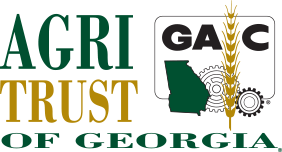Back Injuries and Proper Lifting Techniques
Back injuries are a very common occurrence in most workplaces. According to the Bureau of Labor Statistics (BLS) more than one million workers suffer back injuries each year, and account for one of every five injuries and illnesses in the workplace. Eighty percent of these injuries occur to the lower back and are generally associated with material handling. Workers in the agriculture industry are especially vulnerable to developing back problems because their work frequently incorporates activities that have a high-risk factor of back injury. Agricultural workers commonly lift heavy objects such as bales of hay, sacks of feed, or even animals throughout the workday, but it is not just the lifting. Repetitive motions with a twisting and turning action enhance the dangers of back injury. This month’s Safety Alert is focused on lifting techniques that could help save your back from injury.
What "Lift with Your Legs" Really Means
Beth Skwarecki Published September 19, 2018
If the phrase “lift with your legs” never made any sense to you, you’re not alone. Trying to follow this advice can feel awkward, unnatural, and ineffective—even though it’s not wrong, exactly. Here’s what you’re missing.
The main point of lifting with your legs is to avoid one particular mistake: Rounding your lower back so forcefully that you’re putting yourself at risk for a herniated disc.
If you lift something by squatting down, with your back vertical, you avoid that mistake. Great. But depending on what you’re lifting, that might not be very practical. One 1993 study showed that even when warehouse workers had been trained to “lift with the legs,” and even when they said they were doing their best to follow the instructions, in most cases it was pretty much impossible to lift in the textbook manner.
In reality, you can move your body however you need to, as long as you keep your back roughly straight—stabilized by all those handy core muscles. I like how the Duke Environmental and Occupational Safety Office boils down lifting form to two simple rules:
- Keep the load close to your body throughout the lift. Hug the load to your belly, which may mean kneeling on one knee or squatting asymmetrically, so that you’re almost straddling the thing you need to pick up.
- Maintain your back’s natural curves, especially the arch in your lower back. Think of keeping your spine in the same neutral position as when you’re standing or walking.
If you master those two rules, you’ll protect your back without having to mimic any unnatural, awkward positions. Some illustrations of lifting technique show a person squatting to pick up a box, but then holding the box out in front of them—nobody does that, and it doesn’t even make sense. Your “power zone,” where you can lift the most, is with the object hugged to your belly. If you hug it to your chest or hips instead, that’s almost as good. Once you start holding it higher, lower, or out farther from your body, you can’t handle nearly as much weight safely. The attached lifting guide has a great illustration explaining the concept.
Those two rules also explain how straight-legged deadlifts are possible as a safe gym exercise: people who do those lifts make sure to keep their spine neutral, and the weight close to their body. There’s more than one way to safely lift.
Skwarecki, Beth. “What 'Lift With Your Legs' Really Means.” Lifehacker, Lifehacker, 19 Sept. 2018, https://lifehacker.com/what-lift-with-your-legs-really-means-1829166958.

